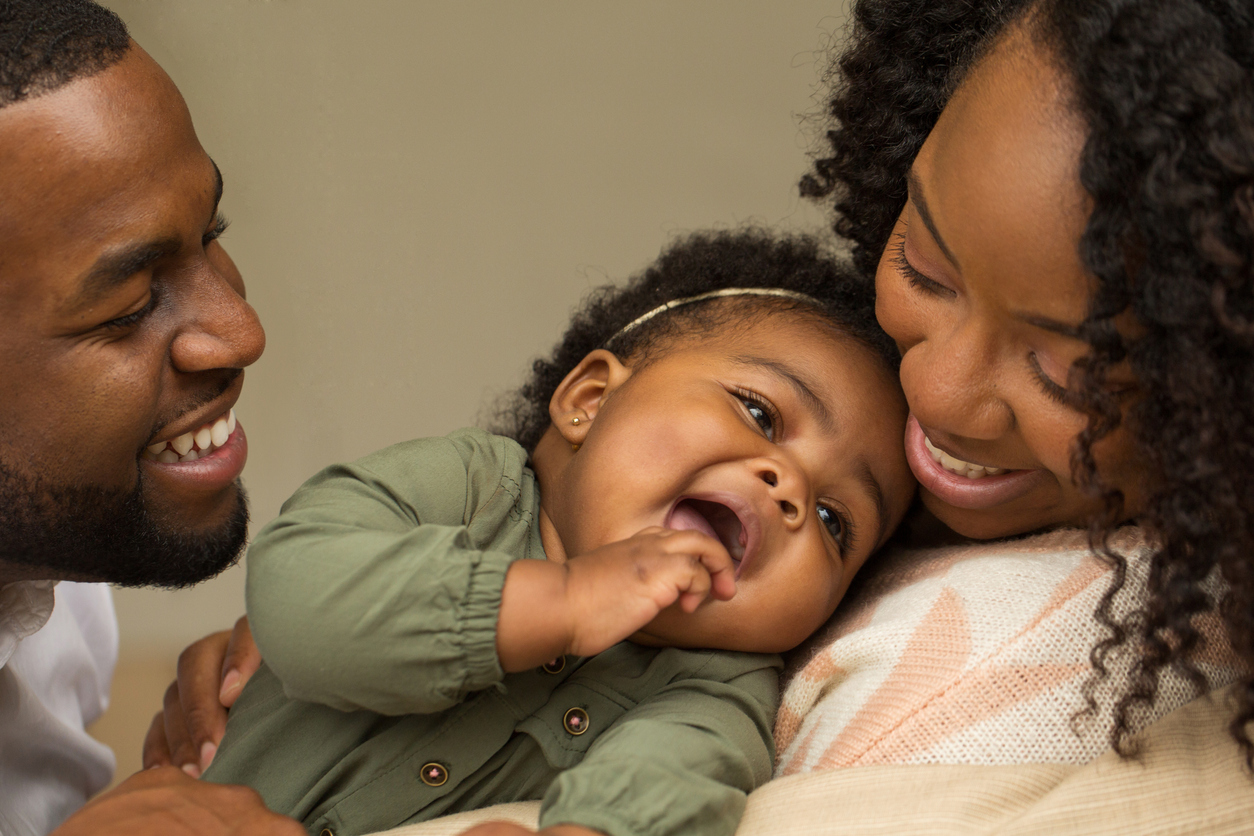When Should You Teach Baby Sign Language?

Communicating with your baby can be challenging when they don’t yet have a vocabulary. Babies communicate their needs by crying, reaching, or sometimes even by throwing tantrums. This can get frustrating for parents and the wider family, which has seen a popular rise in turning to baby sign language.
Baby sign language is not something that’s reserved for the hearing-impaired. It’s a tool that can help with early communication for all babies, and is a universal language that everyone can understand. Let’s explore the world of baby sign language, its benefits, and some useful words to get you and your baby started.
Baby Sign Language vs. American Sign Language (ASL)

Baby Sign Language
There is a common misconception that baby sign language is just for the hearing-impaired, but it can actually be a way for babies to communicate with their caregivers using symbolic gestures. Baby signs are often modified to make them easier for infants to repeat.
Baby sign language is a supplement to the spoken word - parents who speak to their babies may choose to use baby sign language to communicate alongside this in order to make sure that their child is still building up their internal vocabulary.
American Sign Language
While baby sign language is derived from ASL, there are no grammar rules involved. American Sign Language on the other hand, does include grammar rules. It is a language often used by the hearing-impaired community to communicate.
When to Begin Teaching Baby Sign Language

Many babies can sign before they can express themselves verbally. The general time when parents start teaching basic signs can be anywhere between when a baby reaches 6 to 12 months of age, but the nine-month mark is typically the starting point. If you want to give it a shot sooner, go ahead! Some babies may pick it up faster than others, and that’s perfectly fine. Be patient and go with your baby's capabilities at that given time in their development.
How to Begin Teaching Your Baby Sign Language
There are many different paths you can take when it comes to exploring baby sign language. You may want to begin with just a few simple signs and then expand your signing vocabulary once you and your baby get the hang of it.
Parents typically start with the words that will help their babies get their needs met and communicate when they want to do basic things like eat and drink.
The American Academy of Pediatrics recommends the following simple gestures as a starting point:
- Cup
- Eat
- Drink
- Go
- Water
- Nap
- Hurt
As your baby begins to eat solids you may want to include more ‘food’ based words like ‘more’, ‘please’, and ‘finished.’ Some parents also like to start off with words like ‘help’ and ‘thank you’.
Learn How to Sign Yourself

You can’t teach your baby something you don’t know. Once you decide which words to start with, you’ll have to learn them so you can teach them to your little one.
There are various videos online as well as websites that can get you started. These free YouTube videos are a great place to start:
- Baby Sign Language Basics and Baby First Words
- Baby Sign Language
- Baby Language Song ASL | American Sign Language Collection
There are also other available online guides and courses that you can check out to get you started. These include:
Videos are often helpful because they can show you how to make the movements in real-time and you can always rewind them in case you missed something. While videos can be great for you, your baby should learn their first signs from you. Babies learn best from direct, real interaction rather than just watching a video.
Be Consistent
Repetition is key if you want to use baby sign language as a communication tool. Every time you use a word, sign it as well. This will help your baby associate the sign with the spoken word. You want to do it consistently so that your baby repeatedly sees you signing the words. This will help babies better understand the idea you’re trying to communicate.
Don’t get discouraged if your baby doesn’t use sign language the first time you show it to them. It’s going to take repetition. Babies need to observe before they can begin to understand what they are supposed to do. Just as it takes time for babies to speak their first words, it will take time for them to be able to make their first sign gestures.
Make Sure Everyone is On Board

If your baby spends time with different caregivers, you want to be sure that everyone is on board with using baby sign language. It’s important that everyone is familiar with the signs so that they can better communicate with your baby if they’re going to be taking care of them. If your baby attends day care, make sure your provider knows that you’re teaching them sign language.
Benefits of Baby Sign Language
There are several benefits of baby sign language the entire family can enjoy:
Improved Communication

One of the main reasons why parents opt for baby sign language is to be able to communicate with their babies better. Giving babies the tools to express themselves before they are verbal can allow them to communicate better.
Better Bonding
Baby sign language can improve bonding with your baby. There is plenty of positive interaction going on as a baby learns baby sign language. This can help babies to grow closer to their caregivers during their first year.
Less Frustration

Parents can get frustrated when they don’t understand what their babies want. Baby sign language can help to break down some of the barriers (and lesson the tantrums for everyone!). When caregivers and babies can understand baby sign language and communicate in this way, it can make everything from mealtimes to nap times easier on everyone.
Cognitive Benefits
Baby Sign Language.com also points out several studies that indicate long-term cognitive benefits of babies learning sign language, including an improvement of school grades as they get older, and a wider speaking vocabulary.
Psychological Benefits
Babies who learn baby sign language are also thought to have improved self-esteem and confidence. They may also experience less frustration when it comes to communicating.
Baby Sign Language Concerns
It’s important to note that infants can understand spoken words before they can actually talk. This is why it’s crucial to speak to babies from birth and as they develop. If no one is hearing impaired, basic signs should be used in conjunction with speaking to your baby to help them with their speech development.
Some parents may be hesitant to teach baby sign language for fear that it can delay speech development. This is an outdated and scientifically incorrect stereotype - there is no evidence to show that sign language harms or delays child development.
While there is no set time when you should stop signing with your child, some children stop on their own as they develop their language skills and can get their needs met by using their words.
If you are considering using baby sign language to communicate with your baby, remember to be patient. Learning baby sign language takes time. But, once everyone gets on board, it can be a valuable, life-changing tool for you and your baby.

